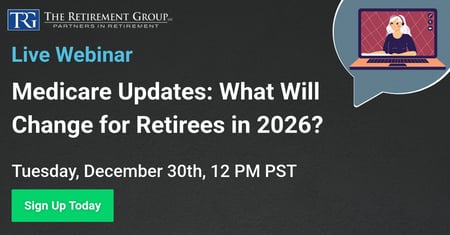In late May 2023, Congress sent a letter to U.S. Treasury Secretary Janet Yellen and IRS Commissioner Daniel Werfel saying that it will introduce legislation to correct several technical errors in the SECURE 2.0 Act. The letter, signed by Senators Ron Wyden (D-OR) and Mike Crapo (R-ID), chair and ranking member of the Senate Finance Committee, respectively, and Representatives Jason Smith (R-MO) and Richard Neal (D-MA), chair and ranking member of the House Ways and Means Committee, respectively, describes four provisions in SECURE 2.0 with problematic language.
- Startup tax credit for small employers adopting new retirement plans
- Change in the required minimum distribution (RMD) age from 73 to 75
- SIMPLE IRA and SEP plan Roth Accounts
- Requirement that catch-up contributions be made on a Roth basis for high earners
Startup tax credits for small employers
Section 102 of SECURE 2.0 provides for two tax-credit enhancements for small businesses who adopt new retirement plans, beginning in 2023.
First, for employers with 50 employees or fewer, the pension plan startup tax credit increases from 50% of qualified startup costs to 100%, with a maximum allowable credit of $5,000 per year for the first three years the plan is in effect.
Second, the Act offers a new tax credit for employer contributions to employee accounts for the first five tax years of the plan's existence. The amount of the credit is a maximum of $1,000 for each participant earning not more than $100,000 in income (adjusted for inflation). Each year, a specific percentage applies, decreasing from 100% to 25%. The credit is reduced for employers with 51 to 100 employees; no credit is available for those with more than 100 employees.
In the letter, the authors note, "The provision could be read to subject the additional credit for employer contributions to the dollar limit that otherwise applies to the startup credit. However, Congress intended the new credit for employer contributions to be in addition to the startup credit otherwise available to the employer."

Change in RMD age
Numerous observers have noted that a technical correction is needed for Section 107 of the Act, which raised the RMD age from 72 to 73 beginning this year, and then again to 75 in 2033. The letter's authors noted that the intention was to increase the age to 73 for those who reach age 72 after December 31, 2022, and to 75 for those who reach age 73 after December 31, 2032. However, as written, the provision could be misinterpreted to mean the age-75 rule applies to those who reach age 74 after December 31, 2032.
SIMPLE IRA and SEP Roth accounts
The expected cost savings and higher profit margins to be unlocked by productivity gains is one reason global corporate investment in AI was up from about $80 billion in 2018 to nearly $190 billion in 2022, even before generative AI burst onto the scene in 2023. Large tech companies are investing billions in their quest to integrate AI-enabled features into their existing products (such as social media platforms and search engines). Smaller start-ups are raising money from venture capitalists and working quickly to develop new business models.6
Speedy and successful implementation of AI systems could deliver a competitive advantage, and the prospects of companies that fail to deliver could suffer. Financial markets are likely to reward the winners and punish losers much like they did when other transformative technologies (such as personal computers, the internet, and smartphones) were invented.
Investors have been pouring money into the stocks of companies that they expect to profit from AI, which has helped drive the recent performance surge of large tech stocks.7 But even if the hype around AI turns out to be warranted, investors should keep in mind that new technology ventures tend to be risky. Some AI projects may turn out to be viable and profitable, but many others could fail.
Roth catch-up contributions for high earners
Addressing what the American Retirement Association called a "significant technical error" in Section 603, the letter clarified a rule surrounding catch-up contributions for high earners. Specifically, the rule's intent was to require catch-up contributions for those earning more than $145,000 to be made on an after-tax, Roth basis beginning in 2024; however, language in a "conforming change" detailed in the provision could be interpreted to effectively eliminate the ability for all participants to make any catch-up contributions.
The congressmen's letter clarified that, "Congress did not intend to disallow catch-up contributions nor to modify how the catch-up contribution rules apply to employees who participate in plans of unrelated employers. Rather, Congress's intent was to require catch-up contributions for participants whose wages from the employer sponsoring the plan exceeded $145,000 for the preceding year to be made on a Roth basis and to permit other participants to make catch-up contributions on either a pre-tax or Roth basis."
No time frame given
Although the letter provided no specific time period for introducing the corrective legislation, it did indicate that such legislation may also include additional items. Stay tuned.